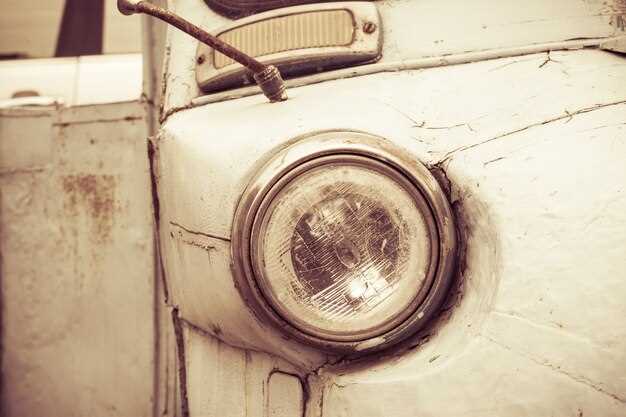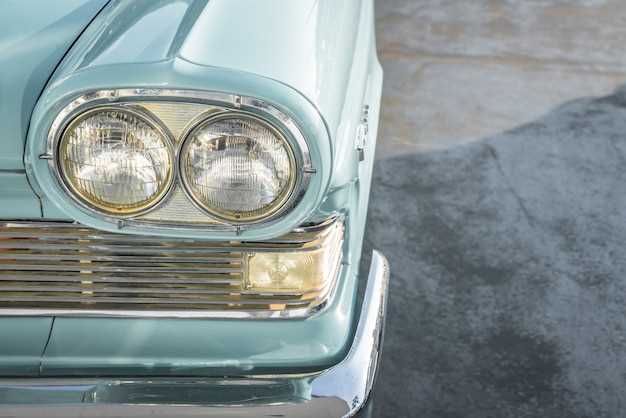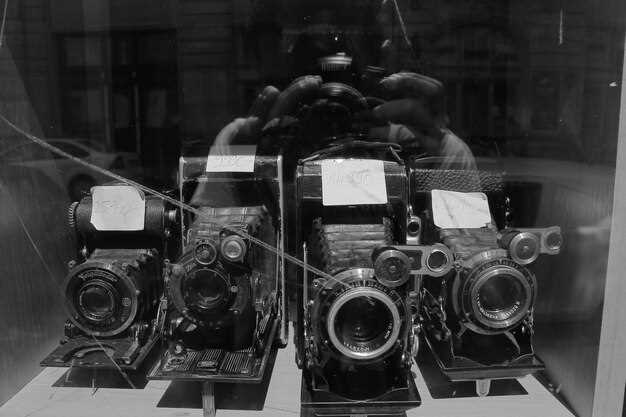
Classic cars are more than just vehicles; they represent a heritage steeped in automotive history and craftsmanship. Each curve, each detail, and each color tells a story that resonates with enthusiasts and casual observers alike. The allure of these timeless machines lies in their ability to evoke nostalgia, a connection to a bygone era characterized by innovation, elegance, and distinctive design.
Photography serves as an indispensable medium for immortalizing this spirit. Through the lens, the unique characteristics of classic cars can be highlighted, capturing not just their aesthetic appeal but also the emotions they inspire. Whether it’s the gleam of a vintage chrome bumper or the rich patina of aged paint, a well-composed photograph can encapsulate the intricate details that define each automobile’s personality and its place in history.
As we delve into the art of capturing classic cars, we will explore techniques and perspectives that enhance the storytelling potential of automotive photography. From understanding lighting conditions to choosing the right angles, the goal is to create images that resonate with the viewer on a deeper level, celebrating both the vehicle and the era it represents.
Choosing the Right Location for Classic Car Photography

Selecting the perfect backdrop is crucial when capturing the essence of classic cars. The location you choose should resonate with the automotive heritage of the vehicle, enhancing its character and story. Urban landscapes, with their gritty textures and vibrant colors, can beautifully contrast with vintage cars, creating striking compositions. Look for abandoned industrial sites, cobblestone streets, or retro diners that evoke a sense of nostalgia.
Natural settings also provide compelling options. Scenic drives through rolling hills, coastal roads, or rustic bridges can highlight a classic car’s elegance while drawing attention to its design details. The interplay of light and surroundings can create breathtaking effects, especially during the golden hour. Consider locations that reflect the era of the car, as this can amplify the nostalgic feel of the photograph.
Additionally, think about the historical significance of your chosen site. Locations like automotive museums or classic car shows allow for a connection to the vehicle’s heritage, placing it within a context that resonates with enthusiasts. Such environments not only enhance the visual appeal but also tell a deeper story about the automotive legacy.
Ultimately, the right location should complement the classic car, creating a harmonious relationship between the vehicle and its surroundings. By carefully considering your options, you can capture images that celebrate the rich heritage and timeless beauty of classic automobiles.
Techniques for Highlighting Details of Classic Automobiles

To effectively capture the essence of classic cars through photography, it is crucial to focus on the intricate details that define their character. Using macro photography allows photographers to zoom in on specific elements such as the distinctive curves, vintage badges, and intricate dashboard designs. This technique emphasizes craftsmanship and brings out textures that might be overlooked in wider shots.
Lighting plays a vital role in highlighting details. Soft, natural light enhances the features without harsh shadows, while golden hour–just after sunrise or before sunset–adds a warm glow that can make chrome trim and paintwork shimmer. Experimenting with different angles can also reveal unique perspectives; shooting from a low angle can exaggerate the car’s lines and create a sense of grandeur.
Reflections can enhance the visual appeal of classic car photography. Capturing reflections in the polished bodywork or windows not only adds depth but also creates an intriguing interplay between the car and its surroundings. Use a polarizing filter to manage reflections effectively and to saturate colors, bringing the automotive details to life.
Incorporating props or backdrops that resonate with the car’s history, such as vintage gas stations or natural landscapes, can add context and depth to the shot. These elements should complement rather than distract from the vehicle itself, allowing the details to shine through.
Post-processing is another key aspect of emphasizing classic car details. Techniques like sharpening, contrast adjustments, and selective color enhancement can bring out the features that make these automobiles iconic. However, maintaining authenticity is essential; the goal is to enhance without altering the car’s true essence.
By combining these techniques–macro photography, strategic lighting, creative angles, mindful use of reflections, thoughtful backgrounds, and careful editing–you can effectively highlight the stunning details of classic automobiles, creating captivating images that transport viewers back to the golden age of automotive design.
Post-Processing Tips to Enhance Vintage Car Imagery
When capturing the unique beauty of classic cars, post-processing plays a vital role in highlighting their heritage and restoring their automotive charm. Here are several effective tips to elevate your vintage car photographs during the editing phase.
1. Adjusting Tones and Contrast: Begin by enhancing the contrast to give the image depth. Vintage cars often feature rich colors and textures, so adjusting the highlights and shadows can help bring those elements forward. Aim for a balanced tone that captures the spirit of the era.
2. Color Grading: Consider applying a slight color grade to evoke a nostalgic feel. Softening the colors or introducing a subtle sepia or pastel tone can convey a sense of time, making the photograph more engaging and reflective of the car’s history.
3. Sharpening Details: Sharpen the image to enhance critical details, such as chrome bumpers, badges, and intricate designs. However, be cautious not to over-sharpen, as it can create an unnatural effect that detracts from the classic aesthetic.
4. Vignette Effects: Applying a gentle vignette can focus attention on the vehicle while creating a more intimate viewing experience. This technique mimics the look of older photographs, drawing viewers’ eyes to the car’s features.
5. Removing Distractions: Eliminate any distracting elements from the background or surroundings that may detract from the vintage car’s story. This helps maintain the viewer’s focus on the subject, showcasing its heritage.
6. Adding Grain: To invoke the feeling of classic film photography, consider adding a light grain effect. This adds texture to the image and enhances the overall authenticity associated with vintage cars.
7. Experimenting with Cropping: Sometimes, a well-thought-out crop can significantly enhance the composition. Focus on specific details, such as the dashboard or unique body lines, which can tell a compelling story about the car’s heritage.
By thoughtfully applying these post-processing techniques, you can transform ordinary photographs of vintage cars into stunning images that celebrate their automotive legacy. Each edit should reinforce the timeless essence of the classic car, reminding viewers of its storied past.





